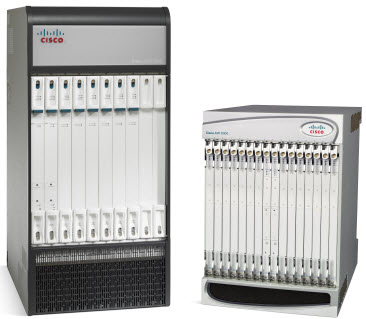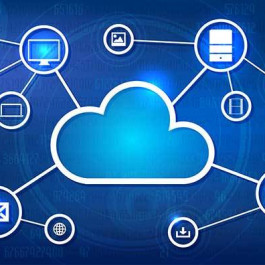
The Cisco new ASR 5500 is a high-performance box “for the next decade” that will support large volumes of mobile and M2M traffic.
Cisco Systems wants to make it easier for mobile operators to scale up the wired networks that their wireless systems feed into, so it is introducing a mobile aggregation switch with 10 times the capacity of its current product.
Less than a week after releasing its latest study on global IP (Internet Protocol) traffic, which forecast an 18x increase in mobile data traffic between 2011 and 2016, Cisco is rolling out a more high-powered switch, the ASR 5500, to transport and process that data. It follows the ASR 5000, which was introduced in 2010 and is based on an earlier product from Starent, which Cisco acquired in October 2009. Cisco calls the new switch a terabit-speed platform and the ASR 5000 a gigabit-scale system, referring to their total system throughput.
The new Cisco ASR 5500 system extends the industry-leading Cisco ASR 5000 Series and delivers the agility and scale that service providers need to meet the evolving mobile requirements of their customers. As the industry’s first elastic solution for mobile networks, the new Cisco ASR 5500 platform was designed to capitalize on breakthroughs in software architecture optimized on new, purpose-built hardware. These design characteristics address three multi-dimensional challenges known as the “new normal,” which are:
–Dramatic growth of mobile lifestyle devices – consumers are buying sophisticated and powerful Internet-enabled devices for use at home, on the road, and at work given the bring-your-own-device or BYOD movement.
–Increased usage of next-generation applications – explosive growth in applications by users, always-on applications and those that continually interact with the network.
–Rise of the “Internet of things” – also known as machine-to-machine or M2M, whereby machines like smart meters and sensors use the mobile network.
The result is nearly 19 billion mobile and fixed connections to the Internet by 2016, according to the Cisco Visual Networking Index (VNI) Forecast (2011 to 2016). Each connection has its own specific requirements, based on device type and application used, that must be met to deliver a superior and personalized mobile experience, “your way.”
Product Highlights/Key Facts
The Cisco ASR 5500 system delivers unprecedented levels of performance and elasticity to help service providers with the following unique capabilities and features:
- The industry’s only elastic packet core solution capable of integrating signaling, data, in-line services, and policy and charging control within a single platform.
- A 10-times performance improvement in throughput, capable of scaling from hundreds of gigabits to a terabit platform.
- The only solution capable of auto-sizing existing network resources to address dramatic variations in network behavior:
o Access (3G, 4G and Wi-Fi); and
o User sessions, transactions, signaling, and data throughput.
- Cisco’s elastic mobile architecture allows applications to intelligently and elastically scale up or down to meet processing requirements. This gives service providers the unique ability to adjust resources and adapt to multiple conditions and network usage patterns, resulting in improved network economics, saving customers up to 47 percent of the total cost of ownership, according to a study issued by ACG Research.
- Proven software platform shared across the Cisco ASR 5000 Series, minimizing operational complexities and accelerating time-to-market.
- The new Cisco ASR 5500 is available now.
To power next-generation 3G, 4G, 4G long-term evolution (LTE) and Wi-Fi mobile services, Cisco has deployed the Cisco ASR 5000 series with several leading global service providers including Bharti Airtel, Telekom Austria Group and Verizon Wireless.
Supporting Quotes
Michael Kennedy, principal analyst, ACG Research
“Change in the use of mobile networks is challenging network architects to build flexibility and elasticity into the mobile multimedia core in order to control its cost. Our analysis of the Cisco ASR 5500 multimedia core solution compared to a leading competitor’s solution finds that TCO savings are up to 47 percent lower than the competitor. The savings are attributable to the Cisco ASR 5500’s scale and integrated functionality that requires up to 65 percent fewer installed units.”
Peter Jarich, service director, Current Analysis
“With LTE deployments ramping up, many vendors have been talking up their mobile packet core expertise and preparing their next-gen platforms. Cisco’s focus on elasticity, combined with the proven performance of its software and the scalability improvements of the Cisco ASR 5500 yield a compelling product that’s commercially available today.”
Jagbir Singh, director, Network Services Group, Bharti Airtel
“As we are transforming our network in order to cater to increasing demand for data services, we wanted a product that was scalable, reliable and one that could adapt to varying requirements and technology needs of our customers. As part of our packet core modernization we have chosen Cisco’s ASR 5000 series and have been very satisfied with its stability, scalability and integration across various technologies.”
Wolfgang Fleischer, group director, Core-Service Network, Group CTO Area, Telekom Austria Group
“At Telekom Austria Group we see our Cisco mobile core network infrastructure as key enabler for advanced 4G LTE services. With the Cisco ASR 5000 Series as the evolved packet core, we can develop and deploy mobile services quickly, reliably and cost-effectively. We are excited that Cisco is enhancing its ASR 5000 Series with increased performance, scalability and elasticity.”
Tom Sawanobori, vice president, Network Planning, Verizon
“Verizon Wireless has been at the forefront of 4G LTE with the largest global deployment to date. Our tradition of innovation and leading advancements in mobility is supported through our relationship with Cisco. The Cisco ASR 5500 platform will help serve our needs for scalability and agility in service deployment models addressing consumer and enterprise markets.”
Kelly Ahuja, senior vice president and general manager, Mobile Internet Technology Group, Cisco
“By 2016, more people will access the Internet from mobile devices than from desktops. Through the leading technology and services of the Cisco ASR 5000 Series and its newest member, the Cisco ASR 5500, Cisco uniquely offers service providers the opportunity to not only keep up with this surging demands from their customers in the ‘new normal,’ but also to enable their ability to grow profitability, to provide new differentiated services and to maximize the return on their existing investments so that they can thrive in the ever-evolving mobile landscape.”
Quick Overview on Cisco ASR 5500
Features and Capabilities
The new Cisco ASR 5500 expands on the industry-leading ASR 5000 Series, giving operators new ways to grow revenue and reduce network costs. Its flexibility helps operators to build their networks with one product family, no matter what the requirements may be. And scale helps ensure that the ASR 5500 will continue to meet stringent demands for the long term and keep subscribers happy.
Benefits include:
- Elastic software for optimal control plane, bearer plane, and services
- Support for both centralized and distributed architectures
- In-line services that integrate intelligence across all services
- Mobile platform designed for true terabit performance
- Holistic performance capabilities beyond just throughput
Specifications at a Glance
| Architecture | High-capacity platform for dense 3G/4G/LTE and small cell services |
| Flexibility | Virtualized design where functions based on software are not coupled to hardware |
| Scale | All dimensions of scale: throughput, transactions, bearers, and PDNs |
| Intelligence | Real-time integrated session-state intelligence (DPI) from Layer 1 to 7 for all traffic |
| Resiliency | Full hardware and software redundancy, as well as high-availability software techniques |
| Services | Gateway GPRS Support Node (GGSN), Serving Gateway (SGW), PDN Gateway (PGW), Home Agent (HA), and In-line Services |
More Cisco News:
Cisco: Enterprises/IT Saying Yes to BYOD
Cisco Unveils Mobile Visual Collaboration Tech in a Post-PC Era





